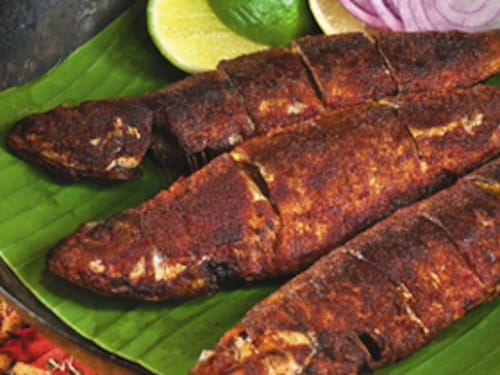

The Home-Cook
It has been suggested that the TRP-busting MasterChef Australia Season 3 was a huge hit with English-speaking Indian television audiences because each of us could find our reflection in its top 24 participants. Everyone’s looking anew at food and what it means in our lives, and there’s no better place to start than at home. Indian home-cooks don’t have access to the technology or produce that was beamed into our homes, but in our jugaad nation, we’re happy to make do. If space constraints stymie plans for herbaceous borders, local grocers can sell us pots of basil and lemon grass. Supermarkets stock portobello mushrooms, galangal, green peppers and other exotica. Kitchen tools, recipes a mouse-click or magazine-flip away and television food shows have ensured that from a chore, cooking has morphed into the cornerstone of the great Indian lifestyle shift.
The Ethical Foodie
Ethical food is the new khadi: It marks you out as a thinking, conscientious, aware individual. If you sell it, good if you eat it, great if you grow it, even better. The ideological opposites of food snobs, they spurn anything that’s force-fed (foie gras? fat chance) or comes with tonnes of air-miles (Chilean sea bass? Go, fish). Organic, local, unpackaged, sustainable are the operative words for this trend. But taste is as important: The aware eater does not settle for ethically sourced material that translates into boring food. Rather, he approaches the familiar with an open mind and pushes its possibilities by ingenuity and creativity. He stuffs wild greens into his ravioli and experiments with local rice for an Arborio substitute. The food snob may hold forth on sous vide the ethicist will cook his dinner by solar power and trump the sous vide dish in taste. The Celeb Restaurant
The Celeb Restaurant
If you are thinking of Malaysian or Ethiopian eating-out options in the near future, cease and desist. Urban India is acquiring a reputation of being one of the world’s most unadventurous palates. Restaurateurs know only three kinds of cuisines make sense here: Indian, Chinese and Italian. The big-ticket bet is now on celebrity restaurants. Le Cirque and Hakkasan debuted in New Delhi and Mumbai respectively by early next year, Megu will open in both cities. The biggest buzz is around Lebua’s Indian restaurant, scheduled to open in New Delhi next May. Inspired by period Bollywood films such as Mughal-e-Azam and Jodha-Akbar, it promises a fresh interpretation of traditional Indian ingredients by six Michelin-starred chefs. It’s pegged to be the most expensive Indian restaurant in the world, with a per person food charge of $400.
First Published: Dec 29, 2011, 06:29
Subscribe Now